This is the final seminar lineup. Video files are linked where available - just click on the seminar titles.
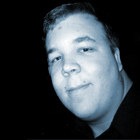 |
Aaron Coday / EMEA Visual Computing Enabling Manager, Intel GmbH "Multi-threading made easier through Open-Source Threading Building Blocks” (Saturday, 9:45) Aaron currently leads the team of Application Engineers at Intel working with gaming and graphics ISV’s in EMEA. After graduate studies at UIUC in Compiler Design, Aaron joined Intel in 1999. He has held several positions including R&D engineer, Compiler Engineer, Post-Silicon Validation engineer and Application Engineer. In his current role, he and his team works with ISV’s throughout EMEA to ensure Intel’s platform continue to deliver the best gaming and graphics experiences. Multi-threading has become a stable of modern programmers vocabulary, however it still presents challenges to the most seasoned programmers. Ensuring your multi-threaded design continues to scale from Dual-Core to Quad-Core and even more is a big challenge. Threading Building blocks provide a task abstraction that generally leads to better scheduling and load balancing. Additionally, the Threading Building Blocks help to reduce synchronization by design and by more efficient synchronization primitives. We’ll review the Threading Building blocks and show a real world case where Threading Building Blocks were applied to a demo game application. |
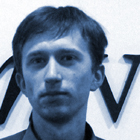 |
Yury Uralsky "When there's smoke there's fire" (Saturday, 11:00) Yury was interested in 3D graphics back when zx-spectrum was a dream game machine. He works in the developer technology group at NVIDIA for more than 4 years. Yury is responsible for helping developers in Europe optimize their game engines, evangelizing NVIDIA technology and thinking about building efficient rendering architecutres of the future. Yury has been a big fan of the demoscene since the original releases of "Second Reality" and "Unreal" by Future Crew in early 90's. Procedural content generation is a big deal for demos. Precomputing animation loops offline and storing large geometry datasets is typically not an option for demos and particularly for intros, where every single byte of storage counts. Demosceners have become experts in data compression and procedural modelling techniques, and in this talk we'll try to attract your attention to some of the approaches to procedural modelling which can be implemented efficiently on a GPU. In particular, we're going to show how Perlin noise can be utilized to create convincingly looking fire effect and how smoke can be simulated in real-time using fluid dynamic calculations in full 3D. We'll also discuss how to render such effects efficiently and avoid aliasing problems. |
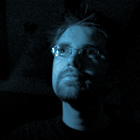 |
Lionel 'Hikey' Lemarié / Sony Computer Entertainment Europe R&D "Multi-Core Mayhem" (Saturday, 12:15) Lionel has been working on PlayStation for 7 years in London, so he has a slight bias towards console programming. His role at developer support then as a lead programmer on the performance analysis tools for PS3 means that, for him, proper use of the multi-core architecture of the CELL is not just a hobby, it's an obsession. He is also a regular at Breakpoint, where he presented the Teenage Mutant Ninja Puppets in the 96KB game compo last year. Hikey will discuss in detail how scalable parallelism was achieved this year's Windows 96KB entry: running the game on a quad-core roughly is 2x faster than on a single core (depending on the graphics card, but that's outside of the scope of this talk). He will examine an advanced technique for distributing tasks to the available processors in a manageable way, even using code that was written in a serial way. To illustrate the improvements, a real-time profiler will be used and explained, along with source code. Pit falls will be highlighted, such as the lack of condition variables on Win32, with the approach taken to solve each problem. The audience should come away with a better understanding of the multi-core architecture and ideas and source code for exploiting it. The on-screen profiler is a big benefit for any coder. |
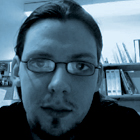 |
Fabian 'ryg' Giesen ".kkapture: Guided tour" (Saturday, 13:30) ryg joined Farbrausch in 2000, and was involved in nearly all fr releases since. He's also one of the two main coders for the .werkkzeug3 and the demos made with it, including Candytron, .kkrieger, and debris; beyond demos, he's the author of kkrunchy, a popular packer for 64k intros, and kkapture, a video capturing tool specifically for demos that is the subject of this talk. In real life, he's a CS student at the University of Bonn. his seminar is intended for coders and explains the internals of kkapture - how it works, and perhaps more importantly, how to write demos that work well with kkapture. If you always wanted to know how kkapture works in detail (or why it doesn't work with your demo), this seminar is for you. http://www.farbrausch.de/~fg/kkapture |
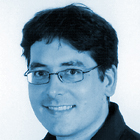 |
Dr. Daniel "Yaka" Berger, MPI for Biological Cybernetics, Tübingen "Virtual Reality - How long are we from the Holodeck?" (Sunday, 9:45) Daniel studied computer science at the University of Karlsruhe. Since 2001 he works at the Max Planck Institute for Biological Cybernetics in Tübingen, where he also did his doctoral thesis. He studies human perception and sensorimotor control using virtual reality as a tool. Daniel has been active in the demoscene since 1993, starting as a coder for the german demo group "Xography". He is a frequent guest in IRCnet scene channels and has also been spotted on several recent demoparties. Flight simulators, caves, head-mounted displays and cybergloves have been around for some time now, but are these devices really sufficient for creating a believable virtual world? What is the current status of technical development and what are the current limits? At the Max Planck Institute for Biological Cybernetics in Tübingen, we do not only have some of the most advanced setups for simulating virtual environments, but we also conduct experimental studies on how humans behave in such virtual worlds and how we can improve the presentation of multimodal stimuli to optimize the feeling of being immersed in the simulated environment. This talk will give an overview of current technical developments in virtual reality at the MPI in Tübingen, and discuss the current possibilities and challenges we are facing. |
 |
Yury Uralsky "Instanced tessellation in DX10" (Sunday, 11:00) Yury was interested in 3D graphics back when zx-spectrum was a dream game machine. He works in the developer technology group at NVIDIA for more than 4 years. Yury is responsible for helping developers in Europe optimize their game engines, evangelizing NVIDIA technology and thinking about building efficient rendering architecutres of the future. Yury has been a big fan of the demoscene since the original releases of "Second Reality" and "Unreal" by Future Crew in early 90's. Tessellation is an efficient geometry compression method which allows to represent complex geometric objects in a very compact form. Eventhough DX10 API doesn't have a tessellation stage, instancing and additional flexibility in geometry processing offered by shader model 4.0 allows to approximate true tessellation stage with very few limitations. We'll give you some background on tessellation and then show you how to get started with tessellation in DX10. |
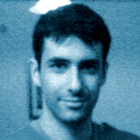 |
Kostas 'Navis' Pataridis "Tonite let's all make demo in Bingen" (Sunday, 12:15) Navis is in the group ASD, who have recently produced some memorable demos such as planet risk and lifeforce. His function is to code and design. Navis was introduced to the demoscene around 15 years ago by the flashing lights of chronologia, state of the art and unreal. Over the years he witnessed alot of changes in aesthetics and the scope of visual effects in productions. Further to observing (and some times dictating!) the demoscene trends, Navis enjoys life as a new parent and works in academia and the clinical medicine industry. Navis wants to talk about his groups' very personal approach to demomaking. What is unique (and highly controversial) about it is the lack of content creation tools even for 8 minute long productions such as lifeforce. Some frequently asked questions are answered (such as: what is a transition and how do you devise a new one) and an insight into the unorthodox creation process of ASD demos is given. This presentation is aimed to aspiring designers and coders as well as old-timers who had their halcyon days spinning shining cubes and want to see things from a different point of view. |
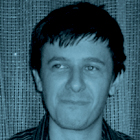 |
Michal 'Bonzaj' Staniszewski "To hardcode or not - considerations about an ultimate demotool" (Sunday, 14:45) Bonzaj was born in 1981. He became a demoscener in 1997. Since then he formed a group called "plastic". After finishing Applied Mathematics studies at the University Of Lodz, he became a full time demomaker together with his girlfriend Kinga. He's interested in finding a perfect demotool, a bridge between coders and artists. Do you prefer writing a demo from scratch with just pure code? Or maybe you're willing to give a free hand to artists thus supporting them with appropriate tools? During the seminar Bonzaj will try to show how to make a bridge between those two schools of democoding and how to deal with tons of different art assets produced by dozens of CG applications. By plugging into a common CG artist environment he'll try to open a gate where hardcode is completely permitted and artists can find an easy way of using it. |
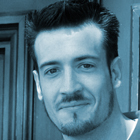 |
Frank 'Netpoet' Stiegler "Copyrights in Germany and beyond -- Creativity and commerce" (Saturday, 16:00) Frank is a German attorney-at-law with several years of experience in IT- and Intellectual Property-related law matters, now working for the Düsseldorf-based data protection company Data Elements. He has been active in the demoscene since 1997, started a musician and slowly changed to organisation of the musicians' group "Park" and several demoparties, including Breakpoint. He has been the host of the scene.org awards since 2006, and is part of Calodox and the Cologne-based demoscene association of Digitale Kultur e.V.. Copyrights are a widely discussed matter, especially in a creative area like the demoscene. After an introductory overview of what copyrights exist in Germany, including differences to other countries' laws, Frank will discuss ownership and transferability of copyrights, talk about sensible models of licenses for the use of other people's work, and round off with an idea of how copyright infringements can be dealt with. If you want a certain topic-related question to be included in this seminar, let Frank know: http://stiegler.highteq.net/ |
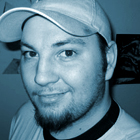 |
Sebastian 'Wayfinder' Grillmaier "Soft Synth, Hard Work - Getting the most out of Farbrausch's intro synth V2" (Saturday, 17:15) Wayfinder has been active in the demo scene since 1997 as a musician, graphician and director in 303dim, kfmf, farbrausch, and his own netlabel, azure. A veteran of V2 sound design, he has used the synthesizer to score (and provide sound effects for) several farbrausch intros and demos as well as .theprodukkt's 96k first person shooter, .kkrieger. In his non-scene life, he works in advertising. Farbrausch's V2 is one of the most powerful intro synthesizer systems out there, period. This seminar will show you how to get your V2 tunes ready for the big screen (and PA!), and how to deal with the unique quirks and opportunities of this remarkable software. And with an update to the synth being released at breakpoint, what could be better than a live introduction to the new features and how to use them efficiently? |
 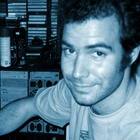 |
Richard Radlherr & Markus Dorninger "Introducing the Nodekit - An Open-source Node-based Programming Environment for Interactive Graphics" (Saturday, 14:45) While Richard Radlherr was developing logistics software for Siemens in Austria, Markus Dorninger was building 3D environments for an X-Box game in England. After that, while Richard was working on encryption technology for card readers, Markus was starting to use digital technology for live performances in stage productions. When they met in early 2006, they immediately started to combine their experiences to develop an instrument for live-performance drawing and animating that became known as the Tagtool. When things took off with their various projects, they founded the company OMA International GmbH together with friends, with the aim or further exploring the field of tension between art and technology. Richard and Markus will give an introduction to the Nodekit, which is a node-based programming environment for interactive graphics that runs the Tagtool program. Richard, as the lead programmer, will explain the software architecture of the Nodekit and demonstrate how to program your own nodes. Markus, as the application designer, will talk about how the project evolved so far, the implications of offering the software under an Open Source licence and about the future roadmap of the project. |
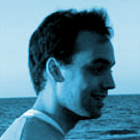 |
Felix 'tmbinc' Domke "Where hacking meets demoscene - abusing mass market hardware for the greater good" (Sunday, 13:30) tmbinc is probably more known for his work on gaming console platforms and other interesting hardware than for his demoscene coding. So far he coded on the Gamecube, the Xbox 360 and the Wii, always with the intention to make the available hardware useful for own projects, without being an official developer. Gaming console hardware offers a great value for a great price, but are unfortunately usually locked down to only execute authentic code. This seminar will focus on homebrew code on the Nintendo Wii and the Microsoft Xbox 360. After giving a short overview over the two quite different architectures, methods to load own, unsigned code to retail machines will be explained and demonstrated. Finally, a "hello world" for both machines will be discussed, to give potentially interested demo coders a start. |